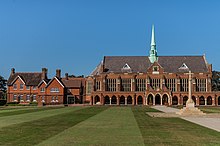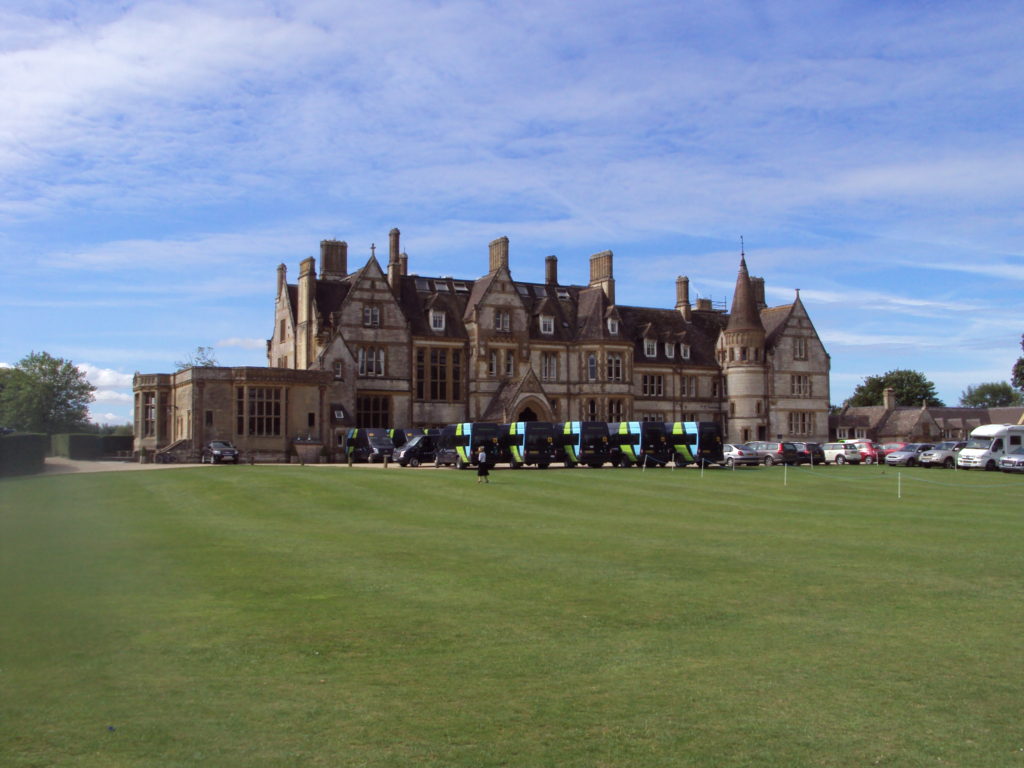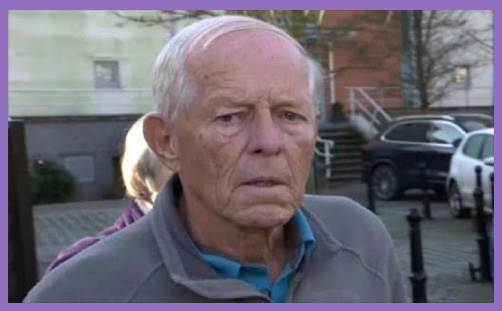
The Best Catholics in the World: The Irish, the Church and the End of a Special Relationship
by Derek Scally (Penguin, 2021).
This review article was sent in anonymously to Surviving Church
On the same day that I finished reading Derek Scally’s fine book, the report on the Metropolitan Police and their cover-ups of the 1987 Daniel Morgan murder was also published. 1987 is a half a lifetime away, yet the report still made for harrowing reading. Daniel Morgan was a private investigator, and in March 1987, after interviewing someone in a pub and taking some notes, he was found in the pub carpark with an axe in his head. He had been murdered, and his wallet was left, but his notes from his trouser pocket stolen. The murder remains unsolved. The report recorded that the Metropolitan Police had “repeatedly failed to take a fresh, thorough and critical look at past failings”. In one telling passage the report noted,
“Concealing or denying failings, for the sake of the organisation’s public image, is dishonesty on the part of the organisation for reputational benefit and constitutes a form of institutional corruption”.
Readers of this blog will not need to be alerted to the connections between the Church of England’s politburo overseeing safeguarding, set against potential reputational damage, and the criticism of the Metropolitan Police. We all know how each mini-saga of incompetent investigation for victims and the falsely accused alike ends. Spoiler alert: wait for the Lessons-Learned Review.
Derek Scally is a journalist and a Dubliner, spending decades reporting on the changes in Germany before, during and after the collapse of the Berlin Wall. Scally often returned home to Dublin from Berlin, and one Christmas Eve went to Mass. He was puzzled and troubled by what he found.
Journalism, like good research, is merely organised curiosity: poking and prying with purpose. Journalists and researchers know the least questioned assumptions are often the most questionable. Journalists, like researchers, understand the open-mindedness with which one must look and listen, and record in astonishment (or sometimes dismay and despair) that which could not be guessed. Journalists, like researchers, ask awkward questions, and take little at face value. Some are locked up for this; others are quietly done away with.
As the anthropologist Claude Levi-Strauss once opined, a wise person doesn’t give you the right answers, but they do pose the right questions. Scally is full of wise insight and he has plenty of pertinent questions.
On visits home he found more memories than congregants in the church where he had once been an altar boy. Not for the first time, the collapse of the Catholic Church in Ireland brings to mind the fall of another powerful ideology – East German Communism.
Yet Scally was puzzled by how the Germans have moved on from not one, but three huge and monumental historical, social and cultural traumas in the twentieth century. The first was the Great War, or more specifically its aftermath, which saddled the country with debt and social conditions that eventually bred slavish loyalty to a dictatorship and political ideology rooted in a punitive quest for Aryan purity. The holocaust was one of only several consequences. The Second World War, and the holocaust, was the next trauma. So shocking was the scale of industrial killing, that some would never believe it. Third, the Cold War divide, and in East Germany, the feared and unaccountable Stasi, with their millions of miles of files on citizens. This was Neighbourhood Watch with a dark twist: anyone could report anybody and anything they thought suspicious. Make an allegation lurid enough, and your neighbour might be relocated before morning: forwarding address unknown.
As Scally points out, the fundamental ingredient at the heart of late twentieth and twenty-first century German transformation lies in truthfulness. The three traumas above are on every school curriculum. No education is complete without the obligatory trip to the holocaust museum, or seminars about Stasi-led ‘purges’ that flouted natural law and justice. As the Old Testament proverb has it, “our fathers have eaten sour grapes, and the children’s teeth are set on edge” (Ezekiel 18: 2). The answer to the proverb is education. As for children’s teeth then, so now: you teach; you educate; you set an example now – if you want to change the future.
While Germans are engaging truthfully and earnestly with their past, Scally sees nothing comparable going on in his native land, and as he remarks, if you raise the question of child-abuse in the Irish Catholic church, the subject is quickly changed, or the discussion shut down. Bishops, clergy and laity all collude. No-one wants to talk about it. And as the church won’t deal with its past, it cannot escape it. The shadow of abuse lives inside church like a cancer too unbearable to contemplate.
So the shame festers and grows. Without authentic and truthful engagement, the past simply will not die. So without a death, there can be no resurrection, and no transformation. The church remains locked in denial and cognitive dissonance. Perhaps things were not quite so bad after all? Perhaps we can pin the blame on the journalists for stirring it all up? Or perhaps pin blame on a handful of bad clergy, nuns or other religious orders? Or perhaps blame those whining and whingeing victims (again)? God, they don’t half go on and on, don’t they? (Matthew 15: 23 – the disciples came to Jesus and urged him, “Send her away, for she keeps crying out after us…”).
The German lesson is this: a society or group that cannot truthfully take responsibility for its sins and failings is destined for atrophy and doomed to die. This may take a long time, but wither and perish it will. Denial is not a cure. Partial treatment, not an option. The Church of England hangs on to its safeguarding practices, frozen in grimacing rictus, hoping to avoid its own demise. In so doing, it strings out the death throes of its culture of incompetence and secrecy, entitlement and arrogance, abusiveness and favouritism. But worst of all, because it won’t accept its end – its death – there is no resurrection, and therefore no hope. As Martin Sewell perceptively noted in a recent blog for Archbishop Cranmer,
“…we currently have across multiple layers of the Church of England a culture of evolved helplessness. It suits the Church that its arcane and devolved structures keep the buck constantly in motion until everyone loses interest after we have a ‘learned-lessons review’ which is not publicly available and nobody reads…”.
I think “evolved helplessness” puts it perfectly. The “banality of evil” – that memorable phrase of Hannah Arendt – is accepted as normative within the Church of England’s safeguarding culture. The system is systemically abusive. NST investigations are outsourced to unlicensed, unaccountable, untrained and unregulated self-employed ‘consultants’. They make life-changing determinations and can issue ministry-ending judgments on clergy who happen to be licensed, trained, regulated and accountable. These ‘consultants’, are basically hired mercenaries. The clergy are given no legal rights or representation at these Core Groups. The Core Groups are populated by unlicensed, unaccountable, untrained and unregulated persons. The process as a whole, whether you are the victim or a defendant, is a cruel carousel of torment that never stops, and won’t let you off.
Perhaps like me you are weary of the recurring cycle of lame excuses that sanction poor procedures, poor practice, and poor prelates. The Church of England’s NST has managed to say little more than “oops” to the Canon Paul Overend debacle, and express some apparent regret. In the wake of Father Alan Griffin’s suicide, it barely managed “oh dear”. But you should not be at all worried. No, you really shouldn’t. Because there will be (repeat spoiler alert) a ‘Lessons-Learned Review’.
But I see no lessons learned. I see no pedagogy of transformation, let alone one of revolution. I see no change. I see no educators or good practitioners. I see no evidence that any lessons will be even noted, let alone learned. I see no commitment to authentic change. I see a lot of energy going into excuses, denials, cover-ups, changing the subject, spinning, and extensive efforts expended on reputational management, avoidance of responsibility and liability. And of course, even if the Lessons-Learned Review was ever written, the NST do not publish them. They remain, Stasi-like, ‘secrets’; although given the nicer nomenclature of ‘confidential’.
The brilliant essayist Dave Foster Wallace (himself an addict, and who sadly committed suicide) noted, the irony for addicts: “the substance being abused suggests itself as the solution to the problem it created”. The Church of England is addicted to its own self-importance and self-sufficiency. Like an addict, it does not think it needs help, let alone some twelve-step programme with all that mutual accountability. Like an addict, it is hooked on the very substance that is destroying the body. How else can I explain a recent chat with a Bishop that went like this:
Me: Don’t you think it would be better, safer and more trustworthy for the Church of England to outsource its safeguarding to an independent body, properly regulated, like doctors, solicitors and barristers have? That way, when there were complaints or investigations, the church could not be accused of setting and marking its own homework?
Bishop: Oh no, we can’t have that! We have to be able to manage our own system. What would it look like if we gave this up?
Me: Well, better, fairer, more trustworthy, transparent and reliable for one thing. But maybe the lawyers and medics have got this all wrong?
Bishop: Hmmm…I’ll have to think about this. [i.e., code for ‘delete’].
Our safeguarding practice is now so unsafe that it has become as wicked as any of the abuse it was supposed to be addressing. But where will we find a Bishop today with courage and conviction to take responsibility, and act? I see no signs of hope.
The Best Catholics in the World is the remarkable result of Derek Scally’s three-year odyssey. He takes us on a quest to unravel the tight hold the Church once had on the Irish. Scally travels the length and breadth of Ireland and across Europe, going to Masses, novenas, shrines and seminaries, talking to those who have abandoned the Church and those who have just about held on; to survivors and campaigners; to writers, historians, psychologists and others. He probes and prods with church officials, priests and religious along the way. This is a book about not one, but two nations: dealing with those murky, difficult questions that face any society coming to terms with its troubling past.
Alexander Solzhenitsyn once opined that there is always this fallacious belief that “it would not be the same here and now…”, and such evil would now be impossible. He did not agree. Hannah Arendt, our foremost scholar of totalitarianism, said this: “totalitarianism in power invariably replaces all first-rate talents, regardless of their sympathies, with those crackpots and fools whose lack of intelligence and creativity is still the best guarantee of their loyalty.” That is part of the reason why Donald Trump got away with so much. He once said: “I value loyalty above everything else, more than brains, more than drive and more than energy”.
Trump’s exultation of personal loyalty over expertise is exactlywhat we see in the safeguarding leadership of the Church of England now. Those leading the church claim that we are making progress on all fronts. In truth, we are locked in an endless, cruel slow circularity, bound to obeisance by an Omertà-likecode of enforced loyalty. Don’t rock the boat; stay on message. Or else.
What do you get if you combine Kafka, Orwell, a Stephen King horror film and an Ealing comedy? Probably something like the NST. As George Orwell (Nineteen Eighty-Four) wrote, “if liberty means anything at all, it means the right to tell people what they do not want to hear”. That was Orwell. But it could just as easily have been Tutu, Gandhi, Mandela or Martin Luther King. Or Jesus.
Dietrich Bonhoeffer once wrote “not to speak is to speak; not to act is to act”. Yet Church of England safeguarding potters on with its selective silence, indifference and amnesia. When things get difficult, it just runs to the small first-aid box in the corner and reaches for the gauze-plaster of PR and a press statement. Eventually, the whole body will be covered in sticking plaster, from top to toe. We will no longer be able to see the body. But sticking plaster will not be enough. It never was or will be. When, I wonder, will this Church of England learn the German lesson?








